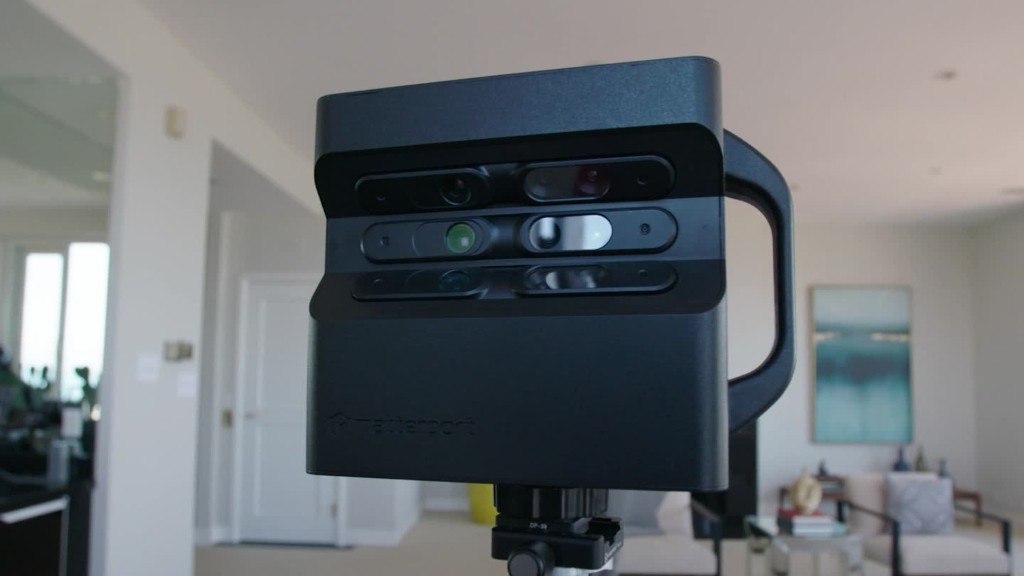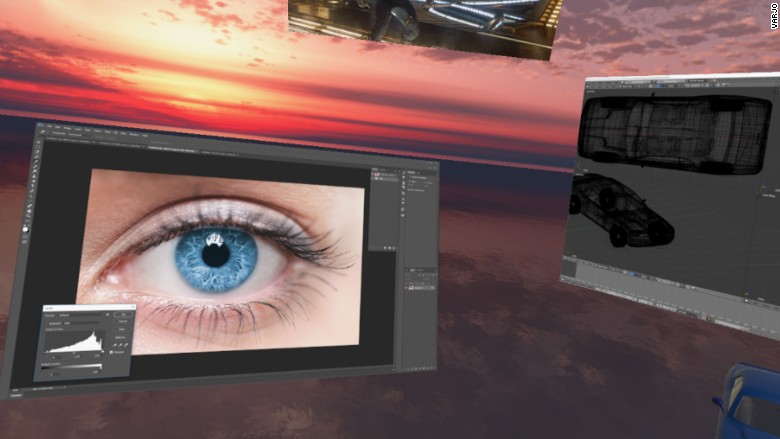
Your future workplace may live inside a virtual reality headset. One startup wants to make sure you can't tell the difference between that and the real world.
Finnish startup Varjo Technologies is focused on developing VR and augmented reality solutions for professionals that match the human eye.
The company, which was announced on Monday, says its human eye resolution headset -- nicknamed "20/20" after 20/20 vision -- will be 70 times sharper than what's already on the market. That's 70 megapixels, compared to 1.2 megapixels for the Oculus Rift or HTC Vive. It's the difference between reading a poster on the wall of a room in virtual reality versus not being able to make out words.
Varjo aims to get a test version of the device into the hands of professionals by the end of the year. A consumer roll out is expected for 2018.
Related: This virtual reality startup is now worth $1 billion
According to Varjo CEO and founder Urho Konttori, a former product manager at Nokia and Microsoft, the technology can be used for training and simulations across many industries, from industrial design to medicine, aviation and real estate.
"For the first time, you actually see things as they will be or are," said Konttori.
For example, an architect could bring existing software programs to the virtual world to test changes, like new textures.
"Virtual workspaces are completely unusable with today's devices due to resolution and focus, and the next-generation devices from the dominant players aren't slated to be meaningfully better," Prashant Fonseka, investor at early-stage venture capital firm CrunchFund, told CNN Tech. "Varjo brings enough resolution and clarity [to VR] that you could actually throw away monitors and spend time in a virtual environment."
The 20/20 headset could also offer professionals more privacy. It can serve up screens from your laptop and desktop devices, without the concern someone peering over your shoulder or spying on open browsers.

I recently tried a Varjo prototype -- a retrofitted Oculus Rift with a clear rectangular display in the center of the device's screen. Anything viewed through the opening was incredibly life-like, even crisper than my naked eye. Everything outside the rectangle resembled a typical VR resolution experience: Not as clear. This was to highlight the difference between what's available now and Varjo's technology.
Related: The New York Times wants you to read the comments
Virtual reality experts believe it could take up to 20 years to "achieve resolutions that can match the human eye." But Konttori believes his company is well ahead of that curve.
Varjo holds three core VR patents, including one for tech that replicates how the human eye focuses inside a headset.

